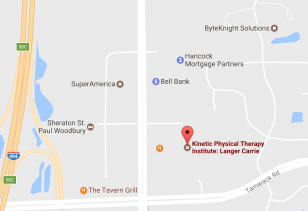Physician Screening
Screening to Identify Appropriate Patients for the Postural Restoration Approach to Anterior Knee Pain
Pelvic assessment tests to determine the presence of pelvic-femoral pathomechanics
A Quick Reference Guide for the Lower Body
General Indications:
~Failed traditional treatment ~Bilateral condition
~Multiple sites of pain ~Chronic symptoms (lasting for > 6 month duration)
Ober‘s Test
Ober‘s Test for hip adduction Patient sidelying with 70°-90° hip and knee flexion. While standing behind the patient, passively flex the knee to 90° and maintain that flexion while abducting and extending the hip to neutral. Stabilize the pelvis from falling backwards. Do not allow femoral internal rotation to occur by maintaining a tibial position that is parallel to the tabletop. Slowly allow passive hip adduction to occur. Repeat on the opposite side. Positive test: Insufficient passive adduction (the medial side of the knee should touch the heel of the bottom extremity).
Modified Thomas Test
Modified Thomas Test for hip extension Patient supine with knees and hips flexed and hips close to the edge of the table. While standing in front of the patient, flex both knees to chest until spine is in neutral position (flat back). Passively lower one leg over the edge of the table, maintaining neutral abduction/adduction. Maintain neutral spine position by stabilizing the opposite leg. Repeat on the opposite side.
Positive test: Insufficient hip extension (the thigh should rest on the table) or presence of a snap or pop in testing the hip joint.
Seated Hip Internal Rotation Test
Seated Hip Internal Rotation Test Patient seated on edge of table. Place a small towel roll under the distal thigh to neutralize the femur. Stabilize the knee with one hand and with the other, rotate the ankle outward until end range hip rotation is felt. Patient should remain seated on that hip. Measure the angle of rotation relative to the vertical. (40-45 degrees is normal) A Positive test is greater than OR less than 40-45 degrees of passive internal rotation of the hip.
Treatment Referral
Treatment Referral Positive findings in at least 2 out of 3 of the tests demonstrates pathomechanics that indicate appropriateness for the Postural Restoration approach.

